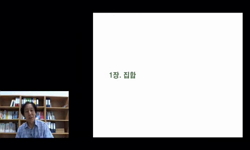Purpose : Febrile convulsion is a common clinical problem affecting 2-4 percent of children. The recurrence rate of FC is a approximately 33-50%. To identify factors influencing the recurrences of febrile convulsions, we investigated the risk factors,...
http://chineseinput.net/에서 pinyin(병음)방식으로 중국어를 변환할 수 있습니다.
변환된 중국어를 복사하여 사용하시면 됩니다.
- 中文 을 입력하시려면 zhongwen을 입력하시고 space를누르시면됩니다.
- 北京 을 입력하시려면 beijing을 입력하시고 space를 누르시면 됩니다.
https://www.riss.kr/link?id=A76447427
- 저자
- 발행기관
- 학술지명
- 권호사항
-
발행연도
1998
-
작성언어
-
- 주제어
-
KDC
516
-
등재정보
KCI등재후보
-
자료형태
학술저널
-
수록면
91-97(7쪽)
- 제공처
-
0
상세조회 -
0
다운로드
부가정보
다국어 초록 (Multilingual Abstract)
Purpose : Febrile convulsion is a common clinical problem affecting 2-4 percent of children. The recurrence rate of FC is a approximately 33-50%. To identify factors influencing the recurrences of febrile convulsions, we investigated the risk factors, especially the relationship between the degree of pyrexia at the initial febrile seizure and the likelihood of subsequent febrile fits.
Methods : During the 24 months, we reviewed the children who presented their first febrile convulsion. All were admitted to the hospital for investigation and treatment. The study group compromised 136 children.4 febrile convulsion was defined as a generalized convulsion that occurred within 15 minutes in a child aged 6 months to 5 years who had no pre-existing evidence of neurological abnormalities. The children were divided into three groups according to the severity of the fever recorded on presentation to hospital. Group I had temperatures higher than 39.5'C, group Ⅱ , 38.5-39.4'G, and group Ⅲlower than 38.4 .
Results :
1) 17(40.5%) children had recurrences with a positive family history in first-degree relatives, 12(60.0%) of febrile convulsions, 3(42.9%) of epilepsy and 2(66.7%) of febrile convulsions and epilepsy.
2) In groupⅠ, three(15.8%) infants aged 6-18 months and two(13.3%) aged 19-30 months had recurrences of febrile convulsions. In group Ⅱ, 13(36.1%) infants aged 6-18 months and 5(23.8%) aged 19-30 months had recurrences of febrile convulsions. In groupⅢ, 10(41.7%) infants aged 6-18 months and 6(46.2%) aged 19-30 months had recurrences of febrile convulsions.
3) The overall recurrence after the initial febrile convulsion was 22(52.4%) children by 6 months, 34(81.0%) children by 12 months, 39(92.9%) children by 18 months, and 42(100%) by 24 months.
4) Fifteen(42.9%) had the recurrences between 6 and 12 months of age at initial febrile convulsion, 21(27.6%) between 13 and 24 months, and B(18.2%) between 25 and 36 months.
Conclusion : Early age at onset of first febrile convulsion, a history of febrile convulsions in first-degree relatives were associated with an increased risk of recurrent febrile convulsions. Especially children with the lower degree of pyrexia at the time of the initial convulsion were more susceptible to recurrent convulsions than those with higher levels of pyrexia.
국문 초록 (Abstract)
목 적 : 열성 경련은 가장 흔한 발작형으로 모든 어린이의 2-4%가 경험한다. 열성 경련은 흔히 재발하는데 33-50%가 재발한다 본 연구에서는 열성 경련의 재발에 관한 인자 중 초발 연령, 직계가...
목 적 : 열성 경련은 가장 흔한 발작형으로 모든 어린이의 2-4%가 경험한다. 열성 경련은 흔히 재발하는데 33-50%가 재발한다 본 연구에서는 열성 경련의 재발에 관한 인자 중 초발 연령, 직계가족의 열성 경련 기왕력을 조사하였고 특히 열의 정도가 열성 경련의 재발에 어떠한 영향을 미치는지 알아보았다.
방 법 : 가톨릭 의과대학 부속병원에서 초회의 열성 경련을 주소로 입원한 136명을 대상으로 하여 평균 2년간 추적 검사하였다. 열성 경련은 체온이 상승하여 열이 있을 때 전신적인 경련이 15분 이내 생긴 경우로 연령은 6개월에서 5년 사이로 선행되는 신경학적 이상이 있는 경우는 포함시키지 않았다. 대상 환아는 입원 시 열의 정도에 따라 39.5 이상군과 38.5 이상 39.5 미만군 및 38.5 미만군의 3군으로 나누었고 연령은 6개월 이상 18개월 이하 군과 19개월 이상 30개월 이하군 및 31개월 이상군으로 나누어 열성 경련의 재발율을 조사하였다
결 과 :
1) 가족력에 따라 열성 경련이 재발한 환아를 보면 직계 가족의 경련성 질환 가족력을 보면 열성 경련 가족력이 있는 경우는 12명(60.0%)으로 통계학적으로 의의가 있었으며, 간질의 가족력은 3명(42.9%), 열성 경련과 간질의 가족력이 있는 경우는 2명(66.7%)이었다. 열성 경련이 재발한 환아에서 직계 가족의 경련성 질환 과거력이 없는 경우는 25명 (23.5%)이었다.
2) 열의 정도에 따라 열성 경련의 재발율을 보면 I군의 경우 6개월 이상 18개월 이하 연령에서는 3명(15.8%)으로 통계학적으로 의의가 있었으며, 19개월 이상 30개월 이하 연령에서는 2명 (13.3%)으로 통계학적으로 의의가 있었다. Ⅱ군의경우 6개월 이상 18개월 이하 13명(36.1%)이었고 19개월 이상 30개월 이하는 5명(23.8%)이었다. Ⅲ군은 6개월 이상 18개월 이하 10명(41.7%)이었고 19개월 이상 30개월 이하는 6명(46.2%)이었다.
3) 초발 열성 경련 후 재발 시기를 살펴보면 6개월 안에 22명(52.4%)이 재발하였으며 12개월에 34명(81.0%)이 재발하였고 18개월에는 39명(92.9%)이 재발하였다.
4) 초발 연령의 경우는 6-12개월 및 13-24개월의 상대 위험도는 각각 3.375(95% CI 0.944-12.061) 및 1.718(95% CI 0.520-5.673)로서 연령이 24-36개월에 비해 재발 위험율이 높아지는 것을 알 수 있으며 6-12개월인 경우 통계학적으로도 의의가 있었다.
결 론 : 열성 경련의 재발은 초발 연령이 어릴수록 많았으며, 직계 가족의 열성 경련 가족력이 있는 경우에 재발이 더 많았고 특히 열의 정도를 살펴보면 체온이 낮은 경우 재발율이 높았다. 따라서 열의 정도가 열성 경련 재발의 유용한 지표라고 생각할 수 있다.
동일학술지(권/호) 다른 논문
-
Menkes 병의 뇌 자기공명 영상 및 자기공명 혈관 조영술의 소견
- 대한소아신경학회
- 정소희(So Hee Chung)
- 1998
- KCI등재후보
-
Ammonium carbonate의 GABAA 수용체 조절작용
- 대한소아신경학회
- 하정희(Jeoung-Hee Ha)
- 1998
- KCI등재후보
-
- 대한소아신경학회
- 김재윤(Jae Yoon Kim)
- 1998
- KCI등재후보
-
Enterobacter sakazakii에 의한 신생아 경막 외 농양 1례
- 대한소아신경학회
- 서정아(Jung A Seo)
- 1998
- KCI등재후보





 스콜라
스콜라





